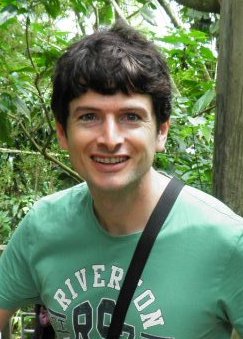Looking for a detailed Toggl vs Time Doctor comparison?
While both Time Doctor and Toggl Track are brilliant time tracking software, they focus on different aspects.
Toggl is a simple time tracker software solution for individuals or teams. You enter your activity, select a project and client, and start tracking time.
On the other hand, Time Doctor is more orientated to time management and productivity improvement for organizations. Although Time Doctor does have time tracking, it also has several features designed to improve an individual’s or team’s productivity.
But how do you decide which tracking features are best for your needs?
In this article, we’ll look at each product and compare their features and pricing to help you make the right choice.

Table of Contents
Let’s get started.
What is Time Doctor?

Time Doctor is a powerful employee productivity management tool used by major companies, like RE/MAX and Ericsson, and small businesses, like Firehouse Subs, to boost productivity across the board.
Time Doctor is also an accurate time tracking app. Additionally, the web-based solution includes several useful features for improving productivity. This can be especially handy when you’re managing a remote team.
Time Doctor is excellent for:
- Tracking how long a project takes in real-time.
- Seeing how much time an employee works actively.
- Streamlining your workflow by integrating with many project management software.
- Automatically calculating billable and non-billable hours and invoicing from within the app.
What is Toggl Track?

Toggl Track is a time tracking tool that replaces the traditional timesheet system.
Primarily focused on being a timesheet app, Toggl Track also offers project and revenue tracking features — making it a great time tracking tool for smaller businesses or freelancers.
Here’s what you can do with Toggl Track:
- Identifying what team members are spending most of their time on.
- Streamlining work hours and making teamwork more productive.
- Invoicing as Toggl Track can help separate billable and non-billable hours.
- Project management, as you can estimate timelines and budgets.
Time Doctor vs Toggl comparison
While both Time Doctor and Toggl Track are excellent time management tools, their features make them slightly different.
Let’s take a closer look:
1. Time tracking
With time tracking being the primary aim, it’s safe to say both apps do it well.
While Toggl and Time Doctor differ slightly in their approach, both are excellent at what they do. Here’s a detailed look at how these tools approach time tracking:
A. Time Doctor
Time Doctor is primarily time tracking software with a focus on improving productivity.
With its manual time tracking mode, users have total control of when the application tracks time.
There are several benefits to using a manual time tracker:
- Employees are aware their time is being tracked since they’re the ones in control.
- Employees can accurately track their own work time and breaks.
- When you’re aware of your own time, you’re less likely to be distracted.
- Interactive time tracking will only record the web and app usage while the program is active, protecting employee privacy.
Moreover, getting started with Time Doctor couldn’t be easier.
To track time and activity in the interactive mode, all you have to do is:
- Download the app from Time Doctor’s website.
- Open the app and create an account.
- Enter a task name and project.
- Hit the green “start” button, and you’re good to go!
Time Doctor will now run in the background so you can focus on your tasks.
When you’ve finished working or taking a break, simply click the red “stop” button. That’s it!
Note that Time Doctor also has an automatic time tracking feature for maximum flexibility.
Some benefits of using an automatic time tracker app are:
- It reduces the chance of discrepancies and manual error.
- You won’t forget to start the timer.
Additionally, its Chrome extension lets you track time directly from apps like Asana, Jira, Trello, and more.
B. Toggl Track
Toggl Track has an automatic time tracking functionality that can be triggered when you open a certain program or type certain words. These triggers can be adjusted within the app.
Alternatively, Toggl Track also has a manual option.
Simply click the “start” button to begin tracking your time, and hit “stop” when you’re done.

Some of Toggl’s other timekeeping features include:
- Tracking every website and program visited for more than 10 seconds.
- A Pomodoro timer to remind you to take breaks at set intervals, available as a browser extension or via the desktop app.
Quick recap
Both Toggl and Time Doctor offer two ways to track time: manually and automatically. While Toggl’s automatic mode requires you to define triggers, Time Doctor’s automatic mode starts tracking time when you turn on your PC.
2. Task management
Let’s see how these productivity tools help with task management:
A. Time Doctor
While Time Doctor’s primary focus is on time tracking, it offers several project management features too.
For instance, managers can assign tasks and projects to individual employees.
Once a manager has added a new project and includes at least one task, the project manager can assign the project to all employees, a handful of employees, or specific groups.
You can also view important project data in the team dashboard, such as:
- Total time spent on the project.
- Productivity levels of the team.
- The most productive employees, and more.

Additionally, Time Doctor integrates with tons of other task and project management tools, letting you track time without interrupting your workflow.
Some of the management software that Time Doctor integrates with include ClickUp, Basecamp 3, Evernote, and Asana.
B. Toggl Track
Toggl Track’s project management dashboard provides an overview of all your projects.
Here’s what you’ll be able to track from the dashboard:
- How much time is being spent on projects.
- How long projects took to complete.
- Time estimates for other projects.
This feature can be useful to determine how much time you can expect to put into a project, how well it has been allocated, and whether you’ll be able to meet future deadlines.

Quick recap
While both Toggl and Time Doctor offer intuitive features, they take different approaches to task management.
Toggl is handy when you want to forecast a project’s future, and Time Doctor is great when you want to track your team’s performance on a project.
3. Idle time tracking
While Time Doctor and Toggl differ here, both can help you manage inactive or idle time. Let’s see how they compare:
A. Time Doctor
If a user is inactive (no keyboard or mouse activity detected) for a set amount of time, Time Doctor displays a ‘Were You Working?’ pop-up on the screen:

If you don’t respond to the alert, the application will stop after 60 seconds; and another pop-up will appear asking users if they are on a break or if they would like to start tracking time again. Here, the idle time isn’t tracked.
This is a great way to prevent employees from recording inactive or idle time.
Additionally, if some employees are given permission to edit their tracked time, the pop-up will ask them if they want to record the idle time.
Note: Time Doctor doesn’t track which keys were pressed. It only determines if any keys were pressed or not.
B. Toggl Track
Toggl Track has a similar feature called “idle detection.”
It can detect when you’ve stepped away from your computer, displaying a pop-up with a timer of how long you’ve been idle. What’s more, you can choose to delete the entry or opt to keep it.
This advanced feature prevents Toggl from tracking time while you’re away and then subsequently having to edit those time entries later.

Quick recap
Both Time Doctor and Toggl Track are capable of detecting idle time.
However, with Toggl, anyone can record and edit their idle time. This creates the opportunity for dishonest time reporting. To avoid this, Time Doctor gives managers the option to choose which employees can record idle time.
4. Reporting and analytics
Here’s how these two tools fare when it comes to generating productivity reports:
A. Time Doctor
Some of the reports Time Doctor automatically compiles for you include:
- Activity summary: Shows active minutes and seconds and unproductive, manual, and mobile time over a selected period.
- Projects and tasks: Shows how much time is being spent on each project. The report also breaks down individual tasks for each user within that project.
- Timeline: Visualizes when your employees start and end their workday, along with time spent on work and breaks.
- Hours tracked: Shows how many hours users have tracked over a selected period.
- Web and app usage: Details the time spent on different websites and applications to help ensure you’re being productive.

B. Toggl Track
Like Time Doctor, Toggl Track is capable of generating various reports.
Let’s take a look at them:
- Detailed report: Shows individual time entries over a particular date range. You can also filter the data by user, client, project, task, etc.
- Summary report: Provides a broader view of your tracked time by viewing the billable hours, clocked hours, etc., for various tasks.
- Weekly report: Determine how much time you’ve tracked over the last week.

Quick recap
While Toggl provides access to three easy-to-read reports, Time Doctor offers a greater variety of reports.
By condensing so much information, Time Doctor makes analyzing team productivity much easier. This makes Time Doctor a better option when you want more advanced reports and analytics.
5. Integrations
A big part of what makes a time tracking app so useful is its integrations, and both Time Doctor and Toggl work well with a vast array of third-party tools.
A. Time Doctor
Time Doctor integrates with more than 50 popular work tools to help streamline your workflow and boost efficiency.
Some of Time Doctor’s key integrations include:
- Office 365: Tracks time spent in Microsoft Word, Excel, PowerPoint, Planner, and Project.
- Todoist: See how much time you spend organizing tasks and projects in Todoist.
- Jira: Track how much time you’re spending on issues by integrating with Jira.
- ClickUp: Easily see how much time staff members are spending in ClickUp.
- Trello: Track your time on Trello cards and boards.
- Zendesk: See how much time you’re spending on each ticket with the Zendesk integration.

B. Toggl Track
Toggl Track’s browser extension for Chrome integrates with more than a hundred tools, including several CRM tools.
Some key integrations include:
- Evernote: See how much time you spend in Evernote.
- Redmine: Display in-depth time tracking reports for the projects you work on in Redmine.
- Zapier: With Zapier, you can connect to Freshbooks, Harvest, and QuickBooks by integrating Toggl with Zapier.

Quick recap
Both Time Doctor and Toggl allow you to streamline your workflow by offering several integrations with popular work tools.
6. Compatibility
Both Toggl and Time Doctor are compatible with different operating systems, browsers, and mobile devices. Let’s see how they compare:
A. Time Doctor
Time Doctor is compatible with nearly all devices.
The desktop app supports Windows, Mac, most Linux versions. There is also a mobile app for Android for mobile time tracking and a Chrome extension.
B. Toggl Track
Toggl Track is compatible with Windows, Mac, and Linux. It also has a Firefox and Chrome extension and a mobile app for Android and iOS.
Quick recap
Both programs support all major operating systems. However, Time Doctor lacks a mobile app for iOS.
7. Pricing
Toggl and Time Doctor offer many great pricing plans:
A. Time Doctor
Time Doctor has several different paid plans available depending on your needs.
It also includes a 14-day free trial (no credit card required.)
Paid plan options include:
- Basic plan: $7/user per month – offers time tracking + task management + unlimited screenshots + activity monitoring.
- Standard plan: $10/user per month – includes “Basic” features + payroll + integrations.
- Premium plan: $20/user per month – includes “Standard” features + client login access + concierge account setup.
B. Toggl Track
Toggl Track has three paid options and a 30-day free trial (credit card required.)
There is also a free plan which supports unlimited projects but only up to five members.
The paid plans include:
- Starter: $9/user per month – includes all the free features + billable rates + time rounding + time estimates + project templates.
- Premium: $18/user per month – includes all the Starter features + time tracking reminders + scheduled reports + time audits + project dashboard.
- Enterprise: Contact Toggl Track for pricing inquiries – includes everything in Premium + unlimited users + expert training and assistance.
Quick recap
While Toggl offers a limited free plan, Time Doctor’s paid plans are slightly more affordable than Toggl Track’s plans. Additionally, Time Doctor’s free trial doesn’t require a credit card, making the trial period hassle-free.
Feature comparison table
Here’s a handy table that summarises the various features available on Time Doctor and Toggl:
| Features | Toggl Track | Time Doctor |
| Live time-tracking | Yes | Yes |
| Project time tracking | Yes | Yes |
| Reporting and analytics | Yes | Yes |
| Captures screenshots | No | Yes |
| Manually edit time | Yes | Yes |
| Payroll calculation | Yes | Yes |
| Automatic time tracking | Yes | Yes |
| Web and app usage monitoring | No | Yes |
| Idle time reminder | Yes | Yes |
| Offline time tracking | Yes | Yes |
| Attendance tracking | No | No |
| API | Yes | Yes |
Final verdict
Individually, each productivity app is excellent, and both offer fantastic ease of use.
When compared, these productivity and time trackers share many common features, but their usage and applications differ.
Toggl is useful when you want to track time on small projects — making it a good choice for freelancers and small businesses.
On the other hand, Time Doctor is an excellent option when you want insights into how your team spends their time, helping you boost productivity and, consequently, profitability.
Moreover, Time Doctor is easily scalable and suitable for businesses of all sizes.
So why not sign up for Time Doctor to elevate your team’s productivity today?

Rob Rawson is a co-founder of Time Doctor which is software to improve work productivity and help keep track of what your team is working on, even when working remotely.


